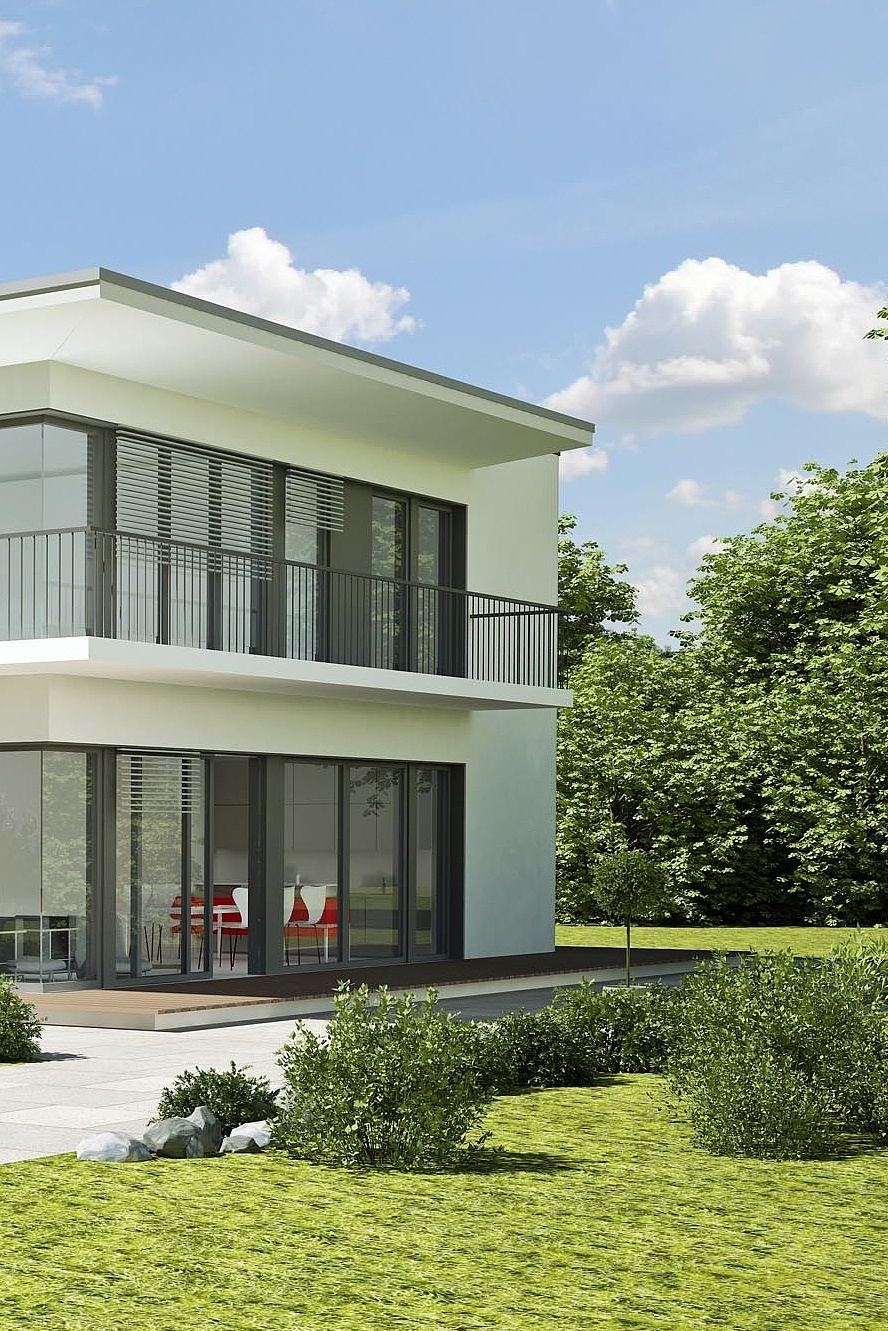Which heat pump is the right one?

Which heat pump is the right one?
The heat pump has become a standard heating system in recent years. Depending on the model and variant, it can be used in both new builds and existing buildings for resource-saving heat generation.
Heat pumps can be used in large or small properties, detached houses, and blocks of flats – but deciding which one is right for your own construction or modernisation project primarily depends on the conditions in and around the building. A few rough classifications and items of basic data help in the selection process.
Benefits of heat pumps
- They use free energy from the air, groundwater, or ground.
- They cover the heat and hot water needs of a household.
- They provide independence from fossil fuels such as oil, gas, and coal.
- If the drive current is generated from renewable energy, they can achieve up to 100 % carbon neutrality and thus a sustainably climate-friendly approach.
- They have low operating costs.
- They can even cool the house in the summer.
- There are subsidies available, such as low-interest loans from the KfW (German Reconstruction Loan Corporation).
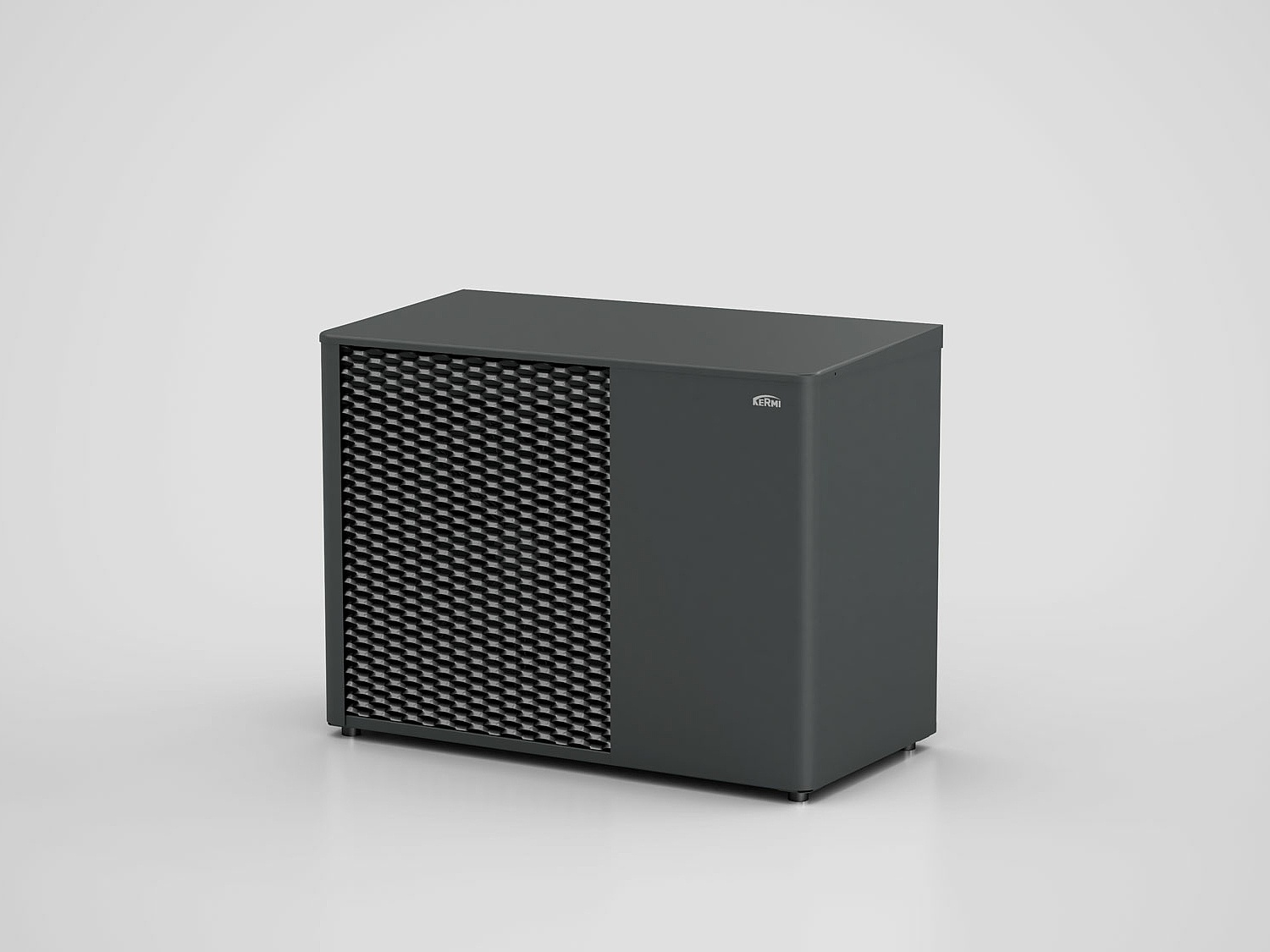
I am planning a new build
I have selected my plot, I know the development plan, and I have decided on the type of house. My planned house offers ideal conditions for operating a heat pump: it meets the KfW Energy-Efficient House standards thanks to its outer wall insulation and its roof insulation, triple-glazed windows, etc. I can plan space in the garden or cellar for the heat pump, providing ideal installation conditions . However, my property is too small or unsuitable for deep drilling or large-scale installation measures in the ground in order to tap a heat source.
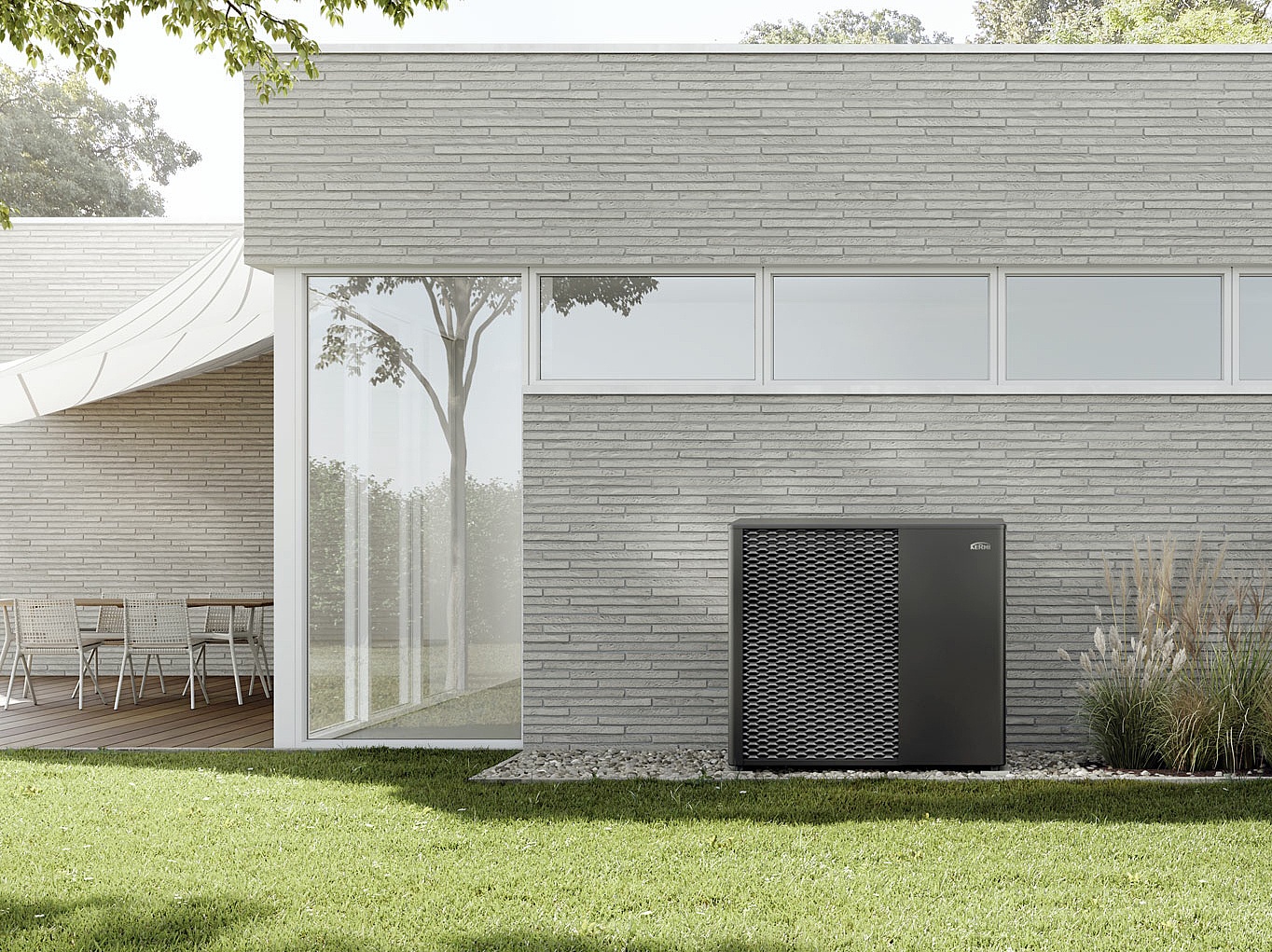
Air/water heat pump as a heat source:
An air/water heat pump uses the ambient or outside air to generate the desired level of heat. This heat source can be tapped almost anywhere with little effort.
As a result, an air/water heat pump is suitable for universal use – giving you the option of installing the technology either indoors or outdoors. A point worth highlighting for new builds is the connection to a low-temperature heating system, such as underfloor or wall heating.
Suitable KERMI system components
The heat, which is generated in a resource-saving way, must also be stored efficiently and brought into the rooms when needed. Additional energy can be saved if the components in question and the control technology of the entire system are precisely coordinated with one another. These system components work well in combination with KERMI air/water heat pumps in new builds:
Benefits:
- Acquisition and installation are comparatively cheap, as there are no additional development costs for the heat source (such as a deep borehole).
- Installation is flexible and can take place indoors or outdoors.
- Only a small amount of maintenance is required.
- The air/water heat pump does not require a permit.
- The heat pump can be integrated immediately or later into a solar panel system including battery storage and/or into the KERMI Smart Home system, and is therefore open to the future.
I am planning a new build
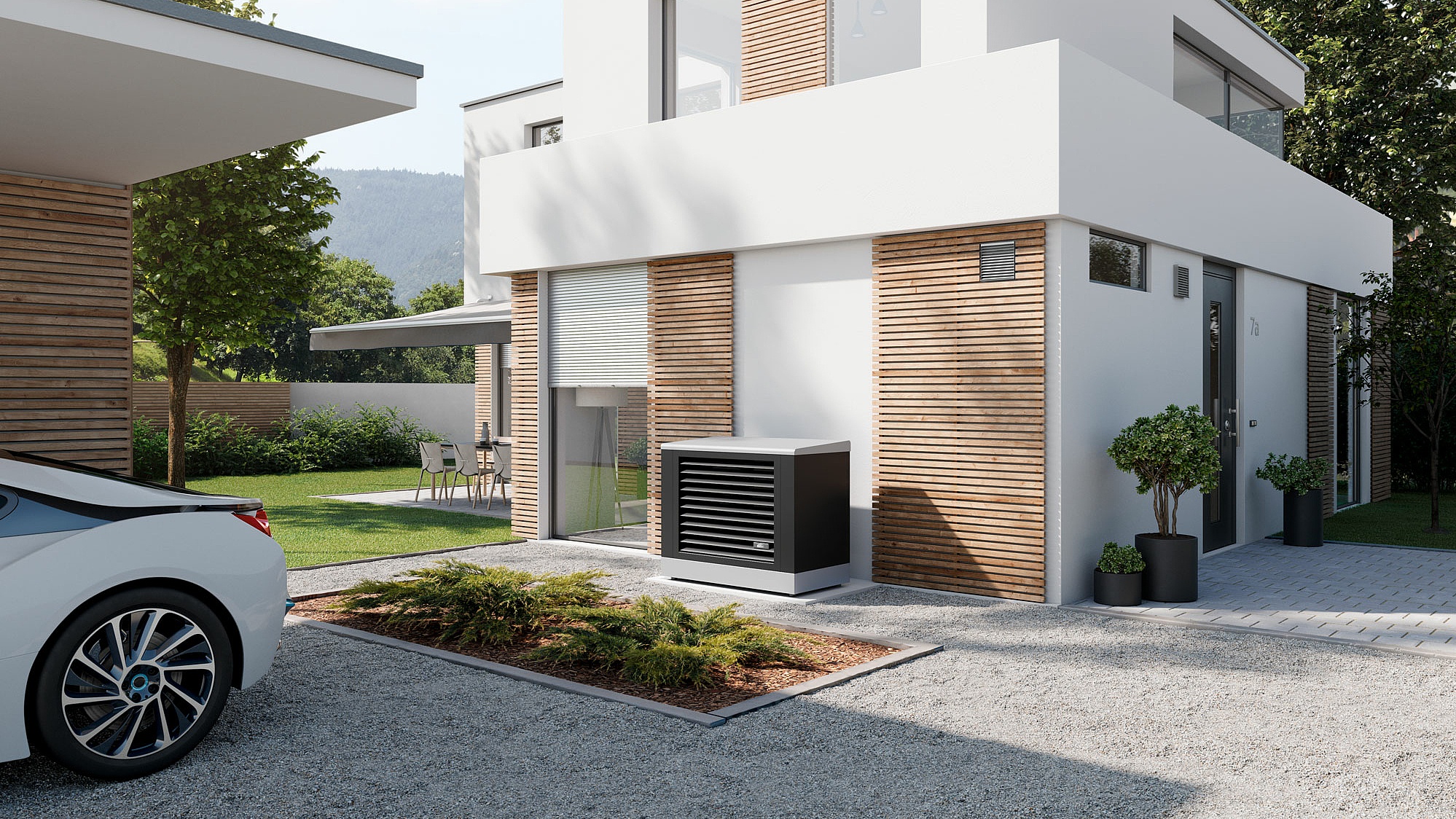
I have selected my plot, I know the development plan, and I have decided on the type of house.
My property offers enough space and the right geological conditions for the large-scale installation of geothermal or surface collectors or for deep boreholes (in order to pump groundwater, for example).
The garden is also free of large plants and the area adjacent to the house is neither built on nor sealed.
Heat from the ground
Brine/water heat pump as a heat source: A brine/water heat pump extracts energy from the ground. This involves installing Geothermal collectors* over a large horizontal area at a depth of around 1.2 to 1.5 metres or Geothermal probes* vertically at a depth of up to 100 metres. In both systems, a heat transfer fluid known as brine circulates in the pipelines, absorbs the geothermal energy, and transfers it to the heat pump.
Suitable system components
- Brine/water heat pumps are highly efficient.
- They ensure higher performance at lower operating costs than air/water heat pumps.
- Only a small amount of maintenance is required.
- The heat pump can be integrated immediately or later into a solar panel system including battery storage and/or into the KERMI Smart Home system, and is therefore open to the future.
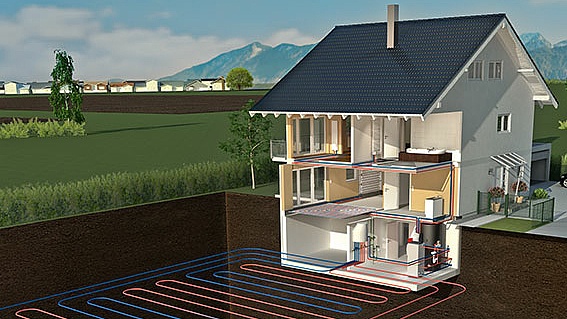
Using heat from groundwater
Water/water heat pump as a heat source: A water/water heat pump uses heat from groundwater as a source of energy. The temperature of the groundwater is between 10 and 15 degrees. This requires two wells that transport the water to the top and later release it back into the depths. A pump delivers groundwater from a suction well to the heat pump. Afterwards, the water is returned via an absorption well.
Suitable KERMI system components:
- Water/water heat pumps have the highest efficiency of all heat pumps.
- Operating costs are very low.
- Only a small amount of maintenance is required.
- The heat pump can be integrated immediately or later into a solar panel system including battery storage and/or into the KERMI Smart Home system, and is therefore open to the future.
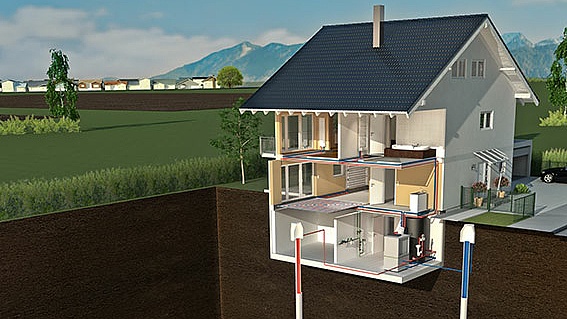
Replacing an existing heating system
I would like to completely replace my existing heating system and use the heat pump in monovalent operating mode; that is, as the only heat generator in the house. This can also be achieved in existing buildings. However, in order for the heat pump to cover all heating requirements, the house should have been modernised for energy efficiency beforehand. This means that the heat exchangers (underfloor heating, steel panel radiators, and bathroom and home radiators) can be operated with a low-temperature heating system such as the heat pump.
It is also important to properly insulate the roof, the exterior walls of the house and cellar, and the cellar ceiling, and to renovate the windows.
Suitable KERMI heat pumps – monovalent operation
Air/water heat pump for outdoor installation
Air/water heat pump for indoor installation
Suitable KERMI system components
- Comparatively cheap purchase, as there are no additional development costs (such as a deep borehole).
- The air/water heat pump does not require a permit.
- Installation is flexible and can take place indoors or outdoors.
- Only a small amount of maintenance is required.
- The heat pump can be combined with renewable energy sources such as solar electricity or biomass.
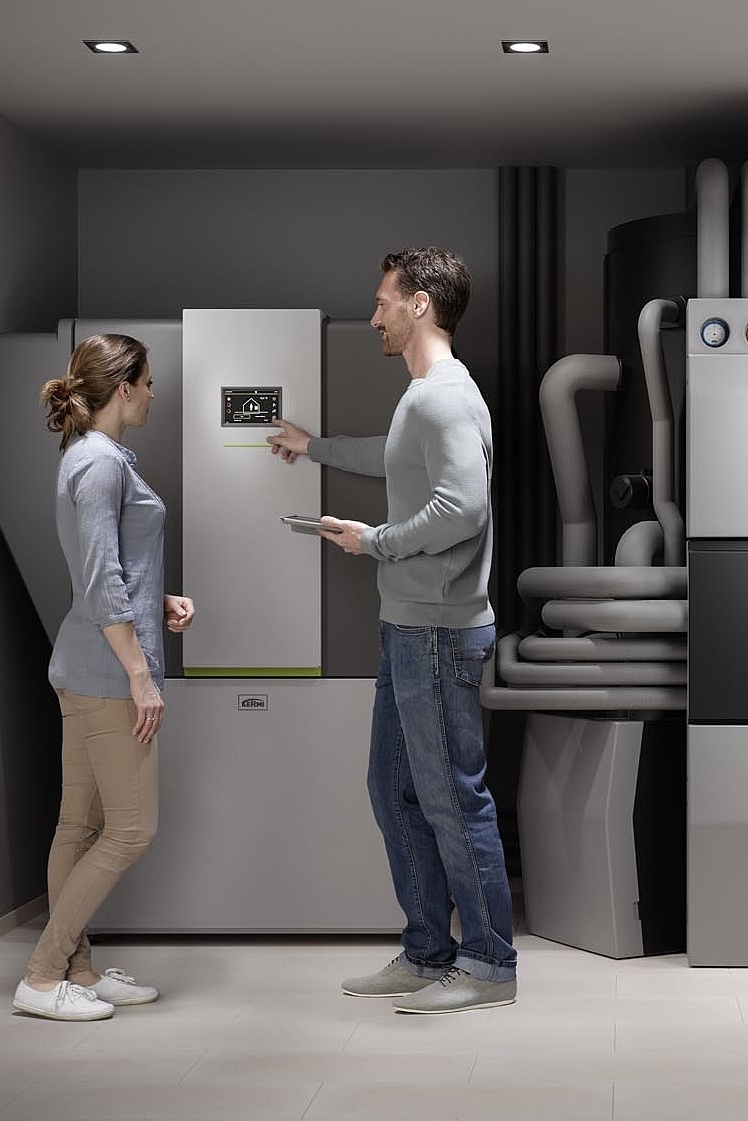
Adding to an existing heating system
I would like to combine my existing heating system with a heat pump. This variant is called bivalent operation. In this case too, it is generally beneficial if the building has been modernised for energy efficiency. There are two ways to add to the existing heating system:
Suitable KERMI heat pumps for both operating modes (bivalent operation)
Suitable KERMI system components:
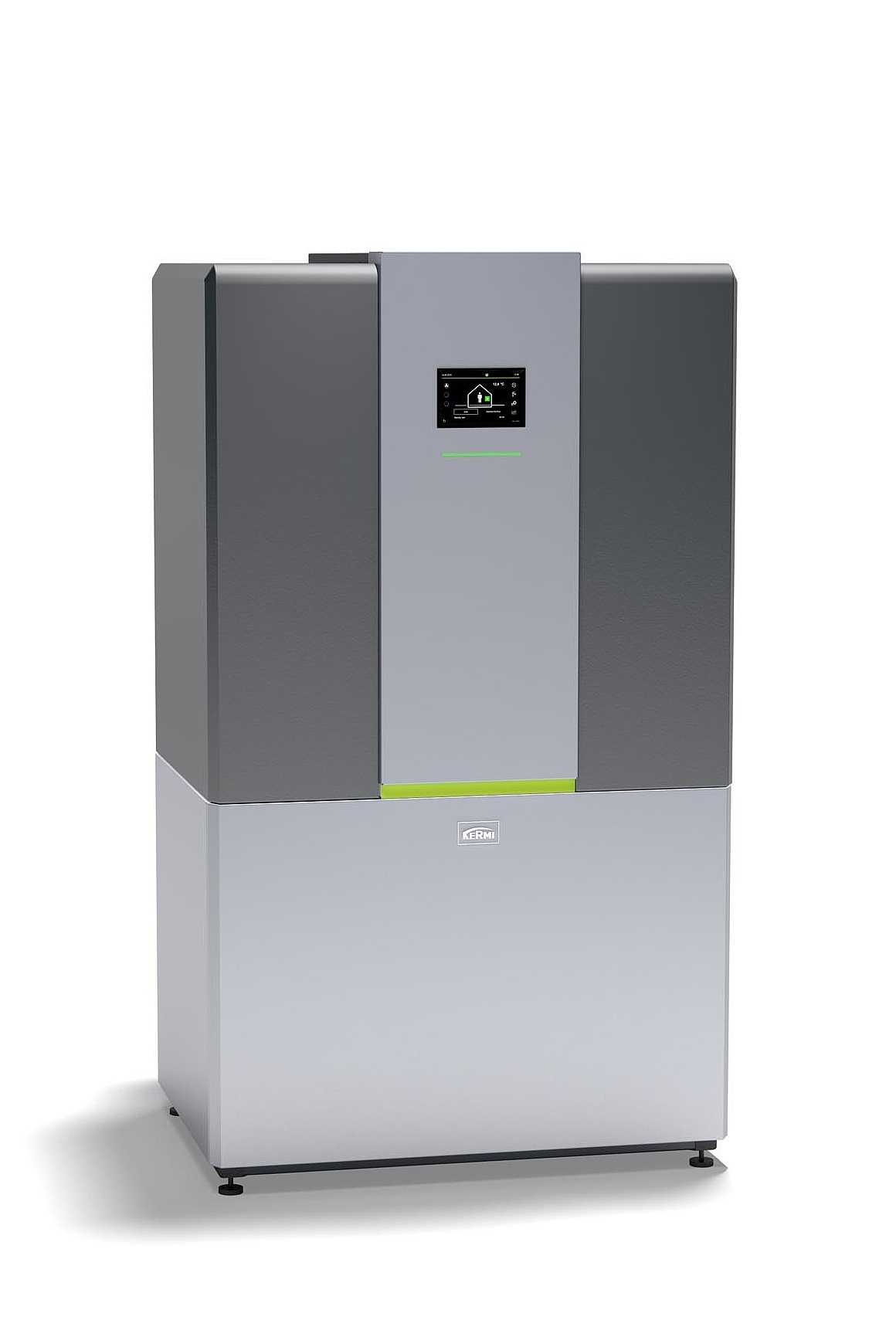
Options
Bivalent-alternative operating mode
Bivalent-alternative operating mode
In the bivalent-alternative operating mode, the heat pump and the heating system alternate on the basis of the outside temperature. In concrete terms, this means that the heat pump covers the entire heat demand up to a defined outside temperature, known as the bivalence point. This is ideally between 2 °C and -6 °C. If the value falls below this, the heat generator takes over the heating process. This means that the heat pump and heat generator do not operate simultaneously.
Benefits:
- The combination of heat pump and heating system is easy to control.
- The existing heating system can operate with higher flow temperatures. This is often important to consider in situations where there are existing radiators.
- There are subsidies available, such as low-interest loans from the KfW (German Reconstruction Loan Corporation).
Bivalent-parallel operating mode
Bivalent-parallel operating mode
In the bivalent-parallel operating mode, both heat generators work together starting from a predefined outdoor temperature. The heat pump then takes over the heating load by itself up to the defined bivalence value. Only when the outside temperature drops below this value does the second heat generator switch on. The heat pump and the second heat generator are designed in such a way that they cover the required heating load together during peak load.
Benefits:
- The heat pump takes over a much higher share of the heat and hot water supply, thus making a significantly higher contribution to covering the heating load than is the case in the bivalent-alternative operating mode.
- There are subsidies available, such as low-interest loans from the KfW (German Reconstruction Loan Corporation).
- Renewable energy sources such as solar electricity or biomass can be integrated.
I am planning a small to medium-sized block of flats
I would like to use heat pump technology in my block of flats and heat a total of three to five housing units with it. Is this possible and which heat pumps are suitable for a block of flats?
Operating heat pumps in a cascade
Buildings with several housing units have a greater heat demand and cooling demand than a detached house. Several heat pumps are needed to cover this higher demand. They can be connected together to form a common heating system (= cascading). Individual heat pumps can be switched on or off according to the current requirements throughout the building. This means that all heat pumps are in operation during peak load and fewer when demand is lower.
Suitable KERMI heat pump for cascading
The standard x-center x40 controller for KERMI heat pumps makes it possible to control several heat pumps together in a way that coordinates them with one another. It also provides a logical way of integrating the corresponding heat storage tanks. The following heat pumps are suitable for cascading:
- Air/water heat pump for outdoor installation
- Air/water heat pump for indoor installation
- Brine/water heat pump for indoor installation
Suitable KERMI system components
- x-buffer layered storage tank combined with x-buffer compact buffer storage tank
Benefits:
Installing several heat pumps reduces the likelihood of a complete failure of the heating system. This increases operational safety.
An active cooling function is provided.
There are subsidies available, such as low-interest loans from the KfW (German Reconstruction Loan Corporation).
